BEYOND LANGUAGE
Technological devices are currently in the center of human communication. They change languages, build new cultural norms, and have a share in globalization. In this study, shapes that people draw on their cell phone while using swype texting is used as a metaphor. By translating specific physical movements and interaction into dynamic visual forms, this “Beyond Language” installation aims to highlight concepts such as diversity, homogeny, and universality.
The “Beyond Language” installation included an interactive projection, which gradually changed with the participants’ word entries. A pedestal, which carried a keyboard, was placed in the center of the space, facing the wall with the projection. Each letter on the keyboard plotted a point that was connected to the other letters (points). Therefore, each word is map of plotted points.
Through this interactive and motion installation, I discuss the following questions: how is the creation of hybrid forms and a universal language possible through interactivity, motion, and translation? Would homogenizing domination of western design result in the elimination of diversity?
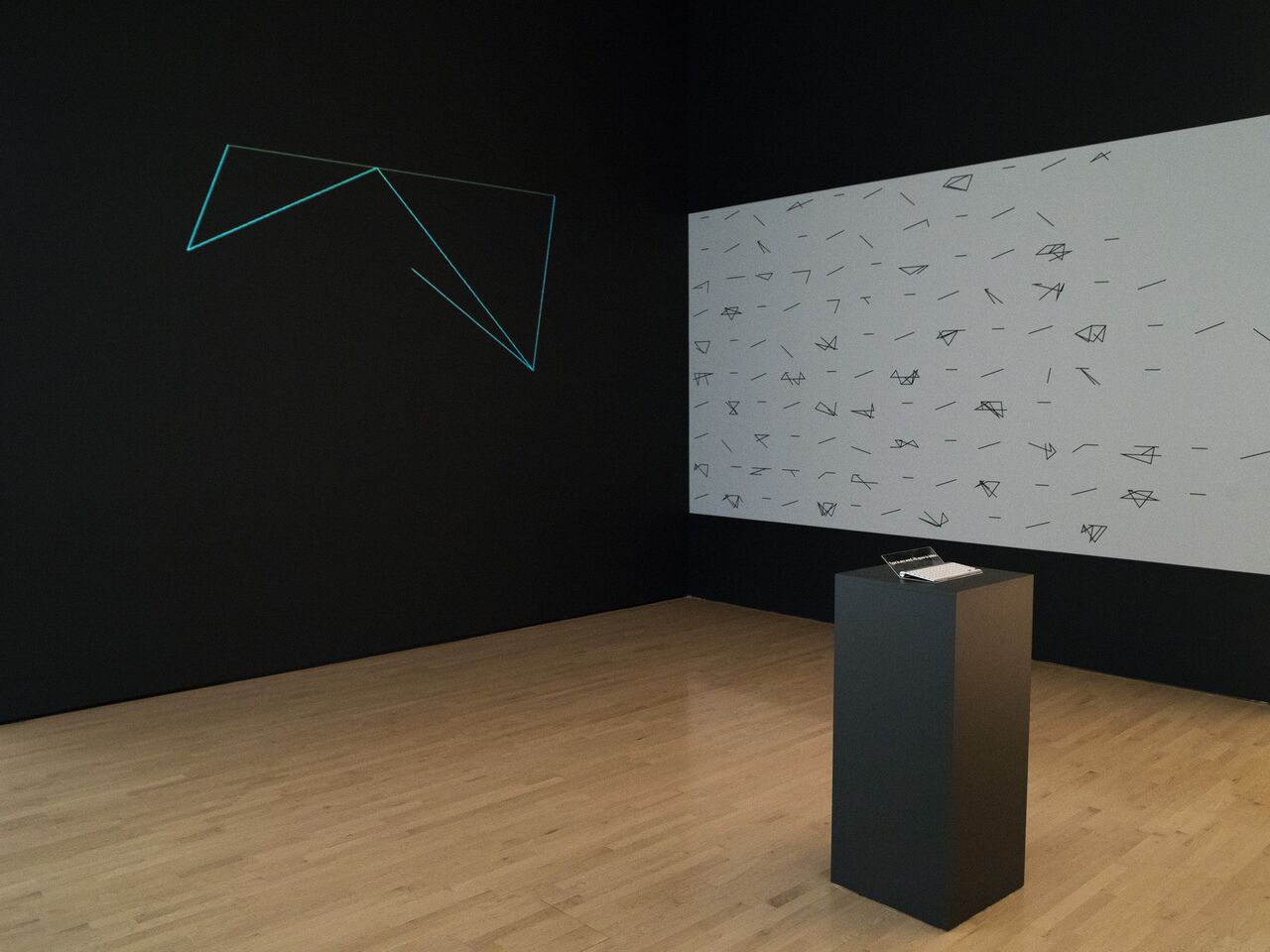

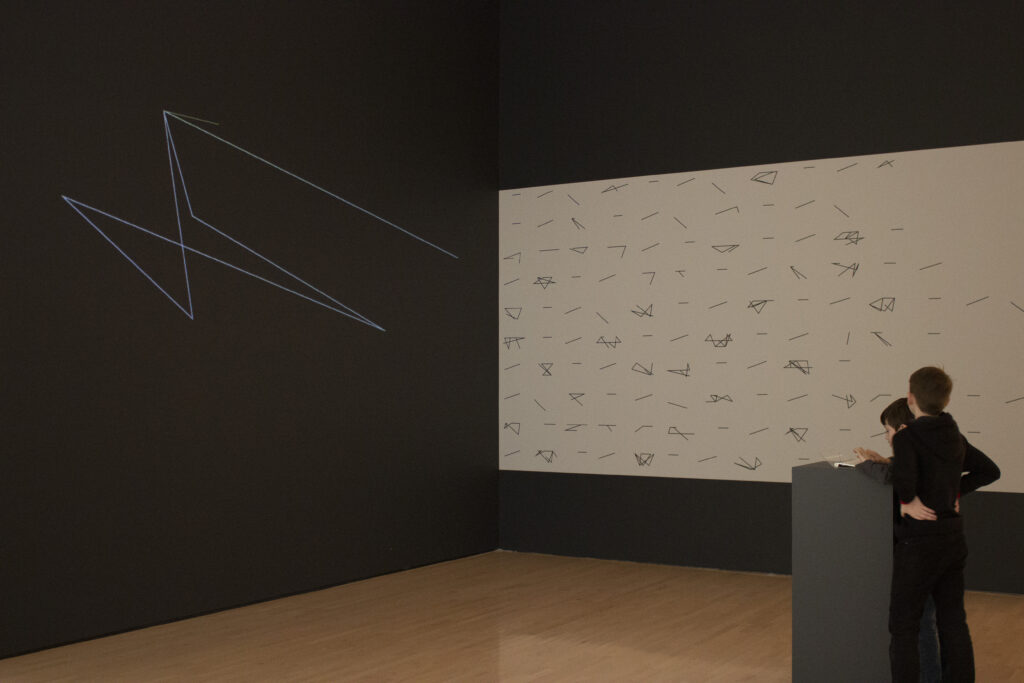
In the duration of the installation, I collected observational data by photographing the viewers interacting with the keyboard and documenting their comments. People of all ages interacted with the piece. Participants were specifically eager to see how their names were translated visually using this system. Below are some of the comments I received while interviewing the participants:
· It is challenging and mysterious. It almost suggests how we are
communicating in the future.
· This piece demonstrates a visual language barrier.
· It is poetic and thought provoking.
· The interactive part animates a story in a non-representational way.
While each participant entered a word, the program was saving it with its corresponding shape. In the duration of the two weeks that this piece was on display, more than eight thousand words were entered into the system and translated into visual forms. The entries created an archive of images made by participation of mostly unknown groups of people. The words recorded in the keyboard were: first and last names, random combination of letters, words I used in my statement on the wall, curse words, sentences explaining a random action, random words and objects, greetings, opinions about the installation, and political statements.
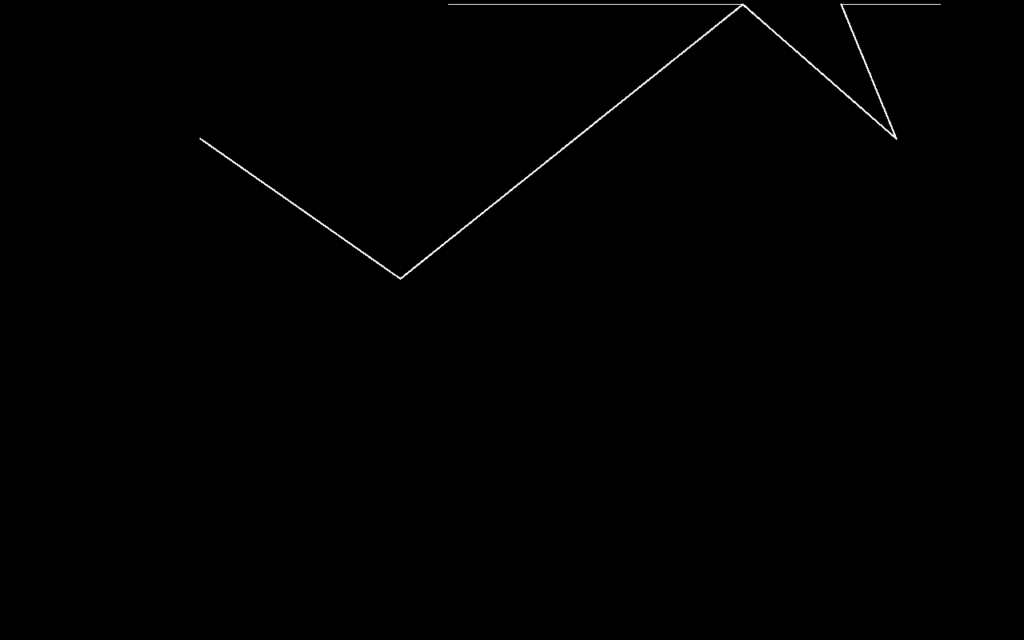
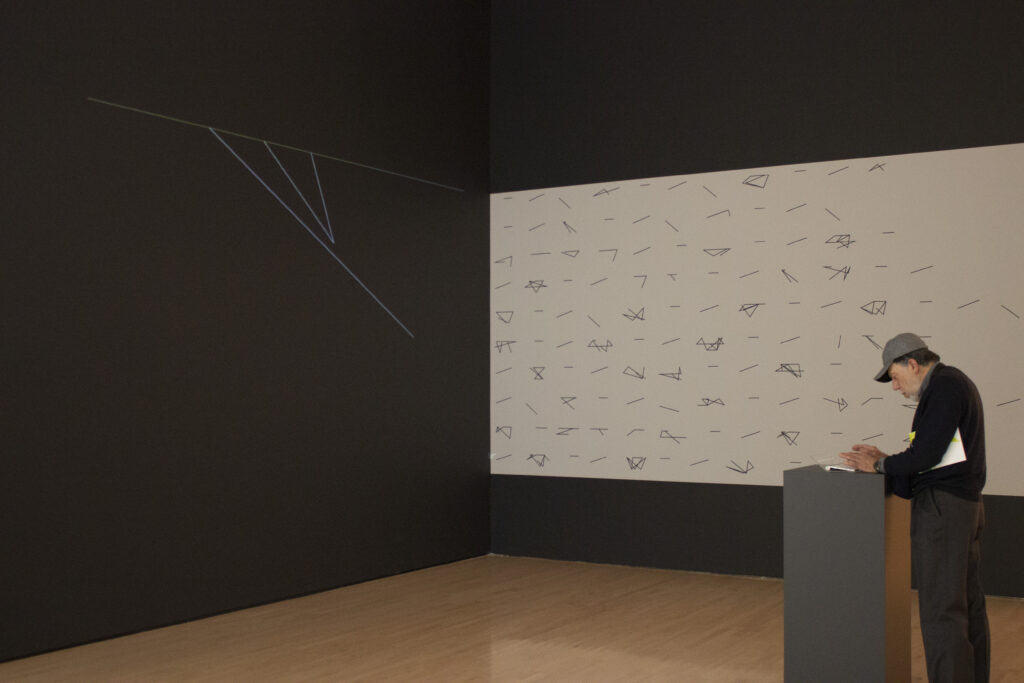
Drawing from my experience of living in Iran, I noticed how technology changes the way people currently communicate in my home country. In recent years, a new form of written language has entered the Persian or Farsi language, which is called Fingilish, i.e. Farsi and English. This form of writing uses the English alphabet to write Persian words. This process of romanizing the Persian language is called transliteration, defined in The Oxford English Dictionary as “Write or print (a letter or word) using the closest corresponding letters of a different alphabet or language (transliterate).” A simple example of this writing would be the way a Persian (or any other non-Latin) proper name is written in English.
In the installation, typing words using the keyboard allowed the participants to enter any word in English, as well as any other language that could be transliterated to Latin letters. If different words from various languages were seen next to each other within this system, one could not distinguish their difference as they formally seemed to belong to the similar system. The keyboard translated the words in the same way for a different language, creating forms equally mysterious and ambiguous in both languages. This installation documented the hidden patterns and visual forms as different languages moved between platforms. It questioned the possibility or impossibility, as well as losses and gains of creation of hybrid forms through technology.
Learnings
Possibility of a universal language through technological interventions
The dynamic forms made by documenting one’s interaction with the keyboard suggests the linkage between human languages. Participants, regardless of their language, could interact with the piece and create consistent forms. The translatability of participants’ interaction with the keyboard into one visual language could be an indication of the possibility of a universal language through technological interventions. Participants, regardless of their language, were able to use the system and receive a formally consistent result.
Homogenizing domination of western design and elimination of diversity
The problem that lied within this system was that specific placement of the English letters in the keyboard determined the path between the letters and the final shape it created. Therefore, this interactive piece metaphorically suggests the ways western forms and designs are currently determining and controlling visual and textual communication. Since technological devices shape individuals’ modes of communication, it is important to include various cultures, languages, and perspectives into designing of our everyday communication devices.
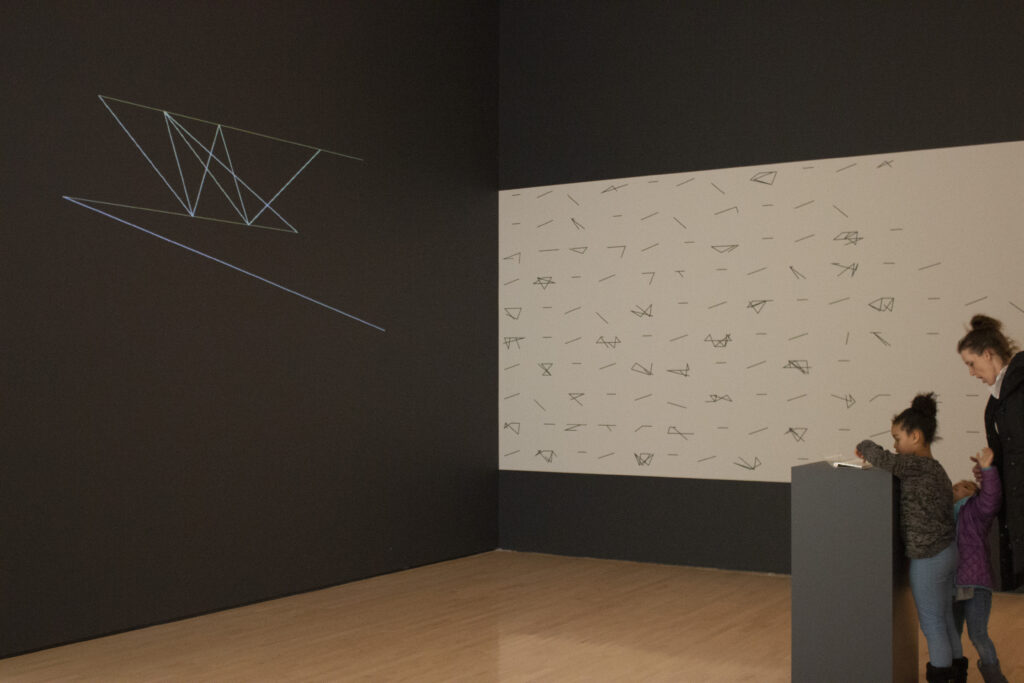
Meredith Davis in Graphic Design Theory, elaborated on one of the most famous aphorisms of the media theorist, Marshall McLuhan, in the context of media culture. “The medium is the message”, which was first presented in McLuhan’s Report of Project in Understanding New Media, refers to “how media change the world around them by effects that supersede the very content they seek to communicate. The impact of television on how we see the world, said McLuhan, is bigger than the content of any single program” (Davis 209–210). In his book The Essential McLuhan, he mentions the message of any medium or technology is the change of scale or pace or pattern that it introduces into human affairs. The railway did not introduce movement or transportation or wheel or road into human society, but it accelerated and enlarged the scale of previous human functions, creating totally new kinds of cities and new kinds of work and leisure” (McLuhan 152).